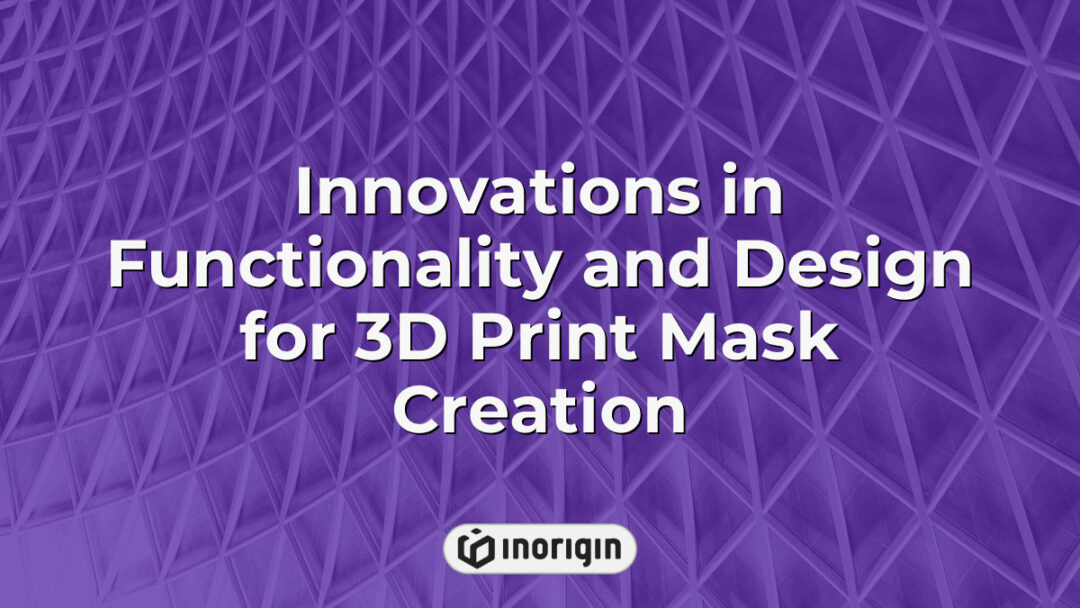In an era where innovation often dances on the precipice of necessity, the emergence of 3D printed masks symbolizes a remarkable confluence of creativity and technology in response to global health challenges. These intricate structures serve not only as protective barriers but also as canvases for individual expression, blending functionality with artistic flair. As the world grapples with evolving respiratory threats, the capacity to fabricate personalized face coverings through advanced additive manufacturing techniques offers a transformative solution that democratizes safety while igniting imaginations. This article delves into the realms of material science, design ingenuity, and public health implications surrounding 3D print masks, illuminating their pivotal role in contemporary discourse on personal protection and communal responsibility.
| Aspect | Key Takeaway |
|---|---|
| Introduction to 3D Print Mask | 3D print mask technology combines advanced additive manufacturing and design innovation to provide customized, effective personal protection solutions. |
| Materials Needed | Producing a 3D print mask requires compatible filaments like PLA or PETG, precise STL files, and appropriate post-processing tools for enhanced comfort and durability. |
| Design Considerations | Careful design selection ensures proper fit and includes features such as adjustable straps and filter integration for optimal performance and wearer comfort. |
| 3D Printer Selection | Choosing printers with suitable build volume, high resolution, and filament compatibility is essential for creating functional and precise 3D printed masks. |
| Safety and Functionality | Ensuring mask efficacy depends on selecting biocompatible materials, rigorous testing, and adherence to design protocols to meet health protection standards. |
| Customization and Branding | 3D printing enables personalization of masks, allowing tailored aesthetics and branding without compromising protective features or comfort. |
| Maintenance and Environmental Impact | Regular cleaning following material-specific guidelines maintains hygiene, while responsible disposal and recycling practices mitigate environmental effects of 3D printed masks. |
Materials And Tools Needed For 3D Printing Masks
The successful fabrication of 3D-printed masks necessitates a variety of materials and tools, which collectively contribute to the production process. Initially, an essential component in this endeavor is the 3D printer itself, as it serves as the primary machinery for translating digital models into physical objects. Correspondingly, STL files play a crucial role; these files provide the necessary geometric information that guides the 3D printer in creating accurately scaled and designed masks. Furthermore, various filament types, such as PLA (polylactic acid) or PETG (polyethylene terephthalate glycol), are required depending on specific characteristics desired in the final product, including flexibility and durability. In tandem with these materials, additional tools such as cutting instruments and adhesive agents may facilitate post-processing steps critical for achieving optimal mask functionality and comfort. Therefore, understanding the interplay between these components is vital for effective execution in the 3D printing arena regarding masks.
Step-by-Step Guide To Designing A 3D Printed Mask
The process of designing a 3D printed mask involves several critical stages that necessitate attention to detail and adherence to specific design principles. Initially, it is important to recognize a common concern regarding the complexity associated with creating effective and functional designs for printable masks; however, advancements in software tools have made this task more accessible than ever before. To begin the design process, one must first select appropriate d print models, which can be sourced from various online repositories or developed using CAD (Computer-Aided Design) software. Subsequently, considerations concerning the mask’s dimensions and fit must be meticulously recorded to ensure comfort and efficacy during use. The integration of features such as adjustable straps or filters may also enhance usability, thereby expanding the range of potential applications for these mask printable items. Furthermore, it is essential to conduct thorough testing of prototypes through virtual simulations or physical trials, ensuring optimal performance while considering aesthetic preferences alongside functionality. Therefore, systematic attention to each stage in the design process underscores the importance of both creativity and technical acumen when developing innovative solutions within the realm of 3D printing technology.
Choosing The Right 3D Printer For Mask Creation
As the COVID-19 pandemic underscored the necessity for effective protective gear, the demand for high-quality masks surged, giving rise to a proliferation of 3D printing innovations. In this context, selecting an appropriate 3D printer becomes paramount for designers aiming to produce efficient and comfortable mask designs from various d print models. Numerous factors must be considered when making this selection; first, it is essential to assess the type of material compatibility with potential filaments that may offer optimal filtration capabilities while ensuring breathability. Furthermore, build volume emerges as a critical consideration since larger printers facilitate multiple prints in a single run, thereby increasing productivity. The precision and resolution of the chosen device are also significant; higher resolutions yield intricate details necessary for securing a proper fit against facial contours, ultimately enhancing both comfort and efficacy during use. By understanding these parameters, designers can make informed decisions regarding their equipment choices—thereby contributing valuable tools in combating health crises through personalized mask production.
Ensuring Safety And Functionality In 3D Printed Masks
The development and deployment of 3D printed masks have become increasingly significant in the context of the COVID-19 pandemic, raising important considerations regarding their safety and functionality. What factors must be evaluated to ensure that these face coverings provide adequate protection? Firstly, it is essential to assess the materials used in the fabrication of 3D printed masks, as certain polymers may not offer sufficient filtration capabilities or skin compatibility. Moreover, proper design protocols must be adhered to in order to achieve effective fit and comfort for wearers; ill-fitting masks compromise protective efficacy against airborne pathogens. Furthermore, the incorporation of additional features such as adjustable straps or integrated filters can enhance both usability and health benefits. Thus, ensuring the effectiveness of 3D printed masks requires a multi-faceted approach that prioritizes user safety alongside operational functionality within public health guidelines. Ultimately, rigorous testing and validation processes are paramount in establishing trust among users regarding the reliability of these innovative mask solutions during ongoing health crises.
Exploring Advanced Features And Accessories For Custom Masks
The evolution of 3D printing has enabled a transformative approach to personal protective equipment, particularly through the development of custom masks that can be tailored to individual needs. As advancements in additive manufacturing technologies continue to emerge, new features and accessories for 3D printed masks are increasingly becoming available. These enhancements may include adjustable straps, filtration systems, and compatibility with various sensors or communication devices, which not only improve the comfort and fit but also enhance functionality. Furthermore, incorporating modular components allows users to adapt their protective gear based on specific environmental conditions or exposure risks. This adaptability is critical in ensuring that 3D printed masks remain relevant amid shifting health guidelines and varied user scenarios—highlighting the inherent resilience fostered by innovative designs within this field. Overall, the exploration of advanced functionalities underscores the potential of 3D printing as a pivotal resource for developing personalized safety solutions while addressing diverse consumer demands in today’s rapidly changing landscape.
Frequently Asked Questions
What Are The Environmental Impacts Of 3D Printing Masks?
The act of crafting a mask through 3D printing can be likened to the careful construction of a fragile bridge spanning a turbulent river; while it offers a vital connection during health crises, its foundation may reveal underlying vulnerabilities with respect to environmental sustainability. As this innovative technology gains traction in producing personal protective equipment (PPE), various environmental impacts warrant critical examination. On one hand, the reduction in traditional manufacturing processes enables localized production, thereby diminishing transportation emissions and waste associated with shipping; however, the reliance on plastics raises concerns about resource depletion and pollution as well as challenges related to post-consumer waste management. Furthermore, the energy consumption associated with additive manufacturing techniques must also be evaluated against conventional methods to assess their overall carbon footprint comprehensively. Therefore, while 3D printing provides novel solutions for urgent demands such as mask creation, it simultaneously presents complex dilemmas regarding long-term ecological consequences that merit thorough investigation and responsible innovation within the field.
How Do I Dispose Of Or Recycle My 3D Printed Mask Responsibly?
The notion that 3D-printed masks can be disposed of in the same manner as common household waste is a misconception that requires critical examination. Given the increasing prevalence of single-use plastics and non-biodegradable materials in modern consumer practices, one might argue hyperbolically that simply tossing a 3D-printed mask into the garbage exemplifies an ultimate act of environmental defiance. However, this perspective fails to acknowledge the necessity for responsible disposal and recycling methods specific to additive manufacturing products. The polymers typically used in 3D printing, such as PLA (polylactic acid) or ABS (acrylonitrile butadiene styrene), possess distinct properties influencing their end-of-life scenarios; whereas PLA may decompose under industrial composting conditions, ABS requires specialized recycling facilities due to its plastic composition.
To ensure environmentally sound disposal, several strategies are recommended. Firstly, users should investigate local recycling programs equipped to handle 3D printed materials. Many municipalities have yet to incorporate adequate measures for processing these unconventional items, which takes precedence in raising awareness among residents about appropriate channels for disposability. Secondly, individuals could explore repurposing options within community initiatives or educational projects aimed at maximizing resource utility before considering discarding any mask altogether. Furthermore, collaborating with organizations dedicated to eco-friendly practices enhances engagement in sustainable behaviors surrounding personal protective equipment.
Conscientiousness regarding the disposal of 3D-printed masks not only mitigates ecological harm associated with improper waste management but also fosters broader societal shifts towards sustainability. By prioritizing responsible actions through informed choices—be it by refining existing technology or implementing effective policy frameworks—the impact on future generations remains paramount. Ultimately, promoting education related to proper disposal techniques presents an opportunity for innovation while combating prevalent issues stemming from pollution caused by neglected responsibilities concerning material waste.
Can I Customize My 3D Printed Mask Design For Personal Branding Or Artistic Expression?
The customization of 3D printed masks serves as a canvas for personal branding and artistic expression, akin to an artist skillfully painting vibrant colors upon a blank slate. This process allows individuals to transcend utilitarian design constraints, transforming protective gear into statements of identity and creativity. Various facets contribute to this phenomenon: first, the utilization of digital design software enables users to manipulate shapes, patterns, and textures with precision; second, advancements in 3D printing technology facilitate the incorporation of diverse materials that can enhance both aesthetic appeal and comfort; third, social media platforms encourage sharing these customized designs, promoting community engagement and inspiring further innovation within the realm of personal expression.
Overall, the implications of customizing 3D printed masks extend beyond mere aesthetics. They represent a significant intersection between functionality and individuality that resonates with contemporary cultural values. As personal branding increasingly intersects with everyday items due to technological capabilities, it is essential to recognize how such customizations not only reflect individual identities but also foster communal dialogue surrounding art, safety, and self-expression in today’s society.
What Are The Legal Considerations Regarding The Use Of 3D Printed Masks In Public Spaces?
The legal considerations surrounding the use of 3D printed masks in public spaces encompass a variety of factors, including intellectual property rights, local regulations, and public safety concerns. Firstly, copyright law plays a crucial role when individuals modify existing designs or create original works for their masks; unauthorized reproduction of copyrighted designs may lead to infringement claims. Additionally, jurisdictions often impose specific statutes regarding mask-wearing during public gatherings or protests, aimed at balancing freedom of expression with security measures. For instance, some regions may prohibit masks that obscure identities in certain contexts, highlighting the tension between individual rights and communal safety. Furthermore, it is essential to consider health and safety regulations related to materials used in 3D printing processes; adherence to such standards ensures that masks do not pose any risk to users or those around them. Therefore, navigating the intersection of creative expression and legal constraints is vital for anyone considering the use of 3D printed masks within communal environments.
How Can I Maintain And Clean My 3D Printed Mask Effectively?
The rise of 3D printed masks has been met with enthusiasm due to their customizable nature and accessibility; however, the effective maintenance and cleaning of these items remain critical concerns for users. Initially, it is essential to understand that different materials used in 3D printing, such as PLA or PETG, possess varying characteristics that influence cleanliness protocols. For instance, while PLA may be more susceptible to degradation from heat or moisture, PETG offers better resistance but still requires careful handling. Regular cleansing using a mild soap solution and warm water can effectively eliminate surface contaminants; following this step with thorough drying minimizes the risk of bacterial growth. Transitioning further into practical strategies, it’s recommended that individuals routinely inspect their masks for signs of wear or damage post-cleaning since structural integrity directly affects safety and efficacy. Understanding these nuances not only promotes high hygiene standards but fosters an informed user base capable of maximizing the utility and lifespan of 3D printed masks throughout public interactions. Emphasizing adherence to established care guidelines enables seamless integration into everyday use while safeguarding personal health and community well-being.
Conclusion
The endeavor of creating 3D printed masks unfolds a realm where innovation and practicality intertwine, forging protective barriers against adversity. By harnessing advanced techniques and materials, individuals can fabricate not only functional but also unique masks that reflect personal creativity—transforming mere masks into canvases of hope and resilience amidst uncertainty.
Related posts:
- Precision Engineering and Material Innovations Shaping 3D Printed Mask Performance
- How Can Ergonomics Play a Role in Product Design Success by Enhancing User Comfort and Market Appeal
- Legal Frameworks and Ethical Debates Surrounding 3D Printed Weapons in Modern Society
- How Can Ergonomics Enhance Your Product Design to Boost User Comfort and Workplace Efficiency
- Why Is Ergonomics Important in Product Design for Enhancing User Comfort and Efficiency
- How Can Ergonomic Design Improve Product Usability Through Enhanced User Comfort and Safety




